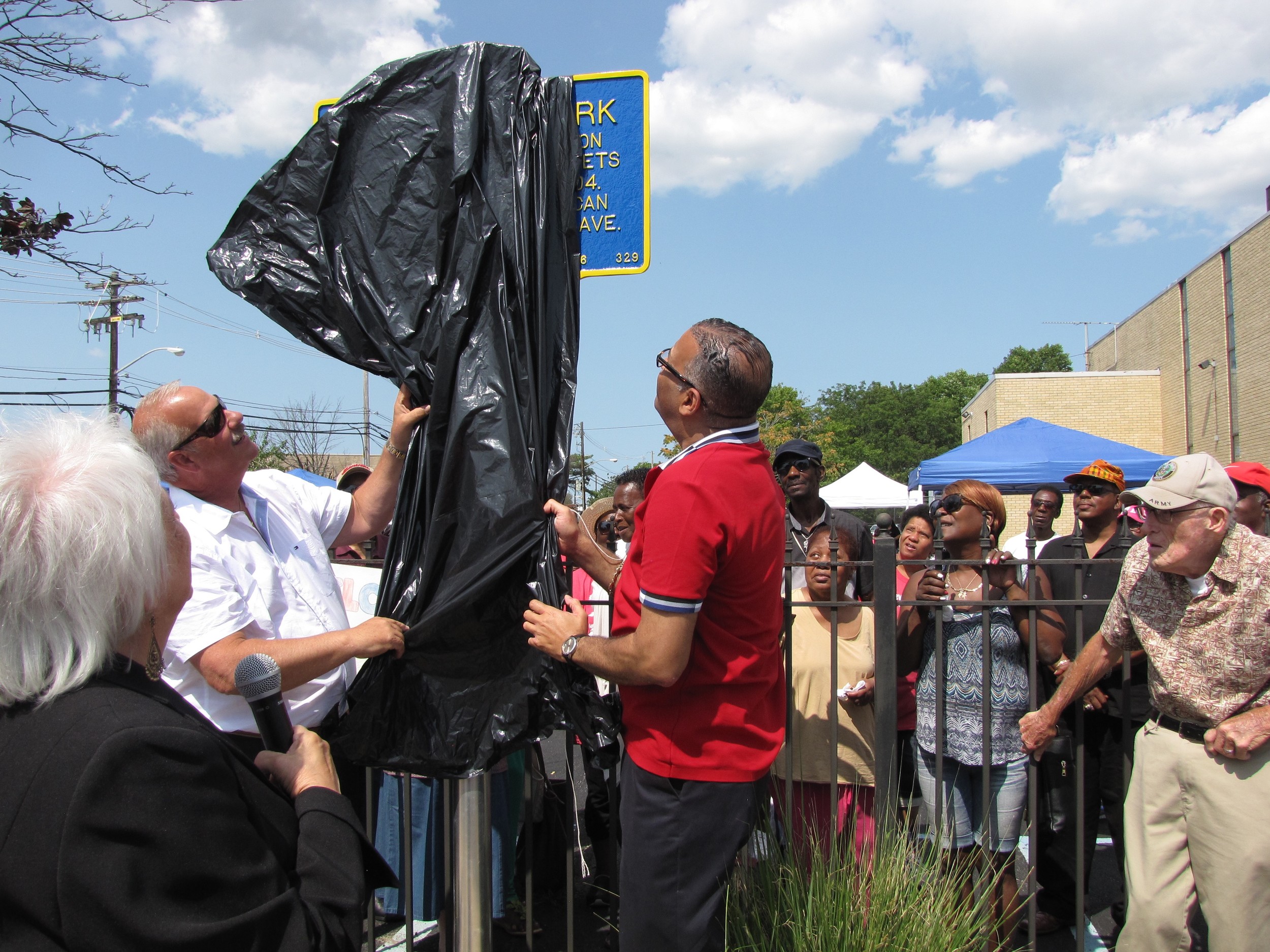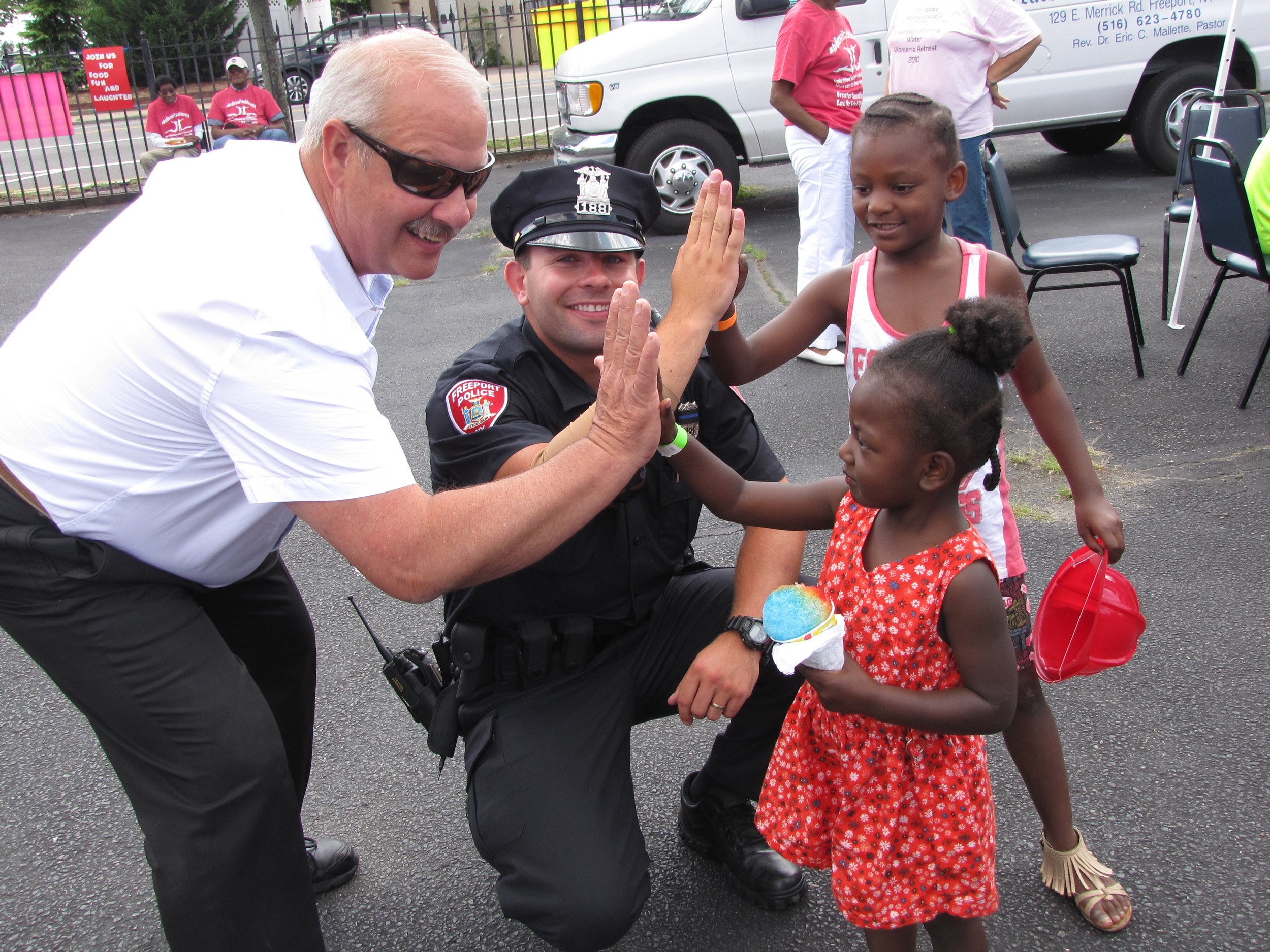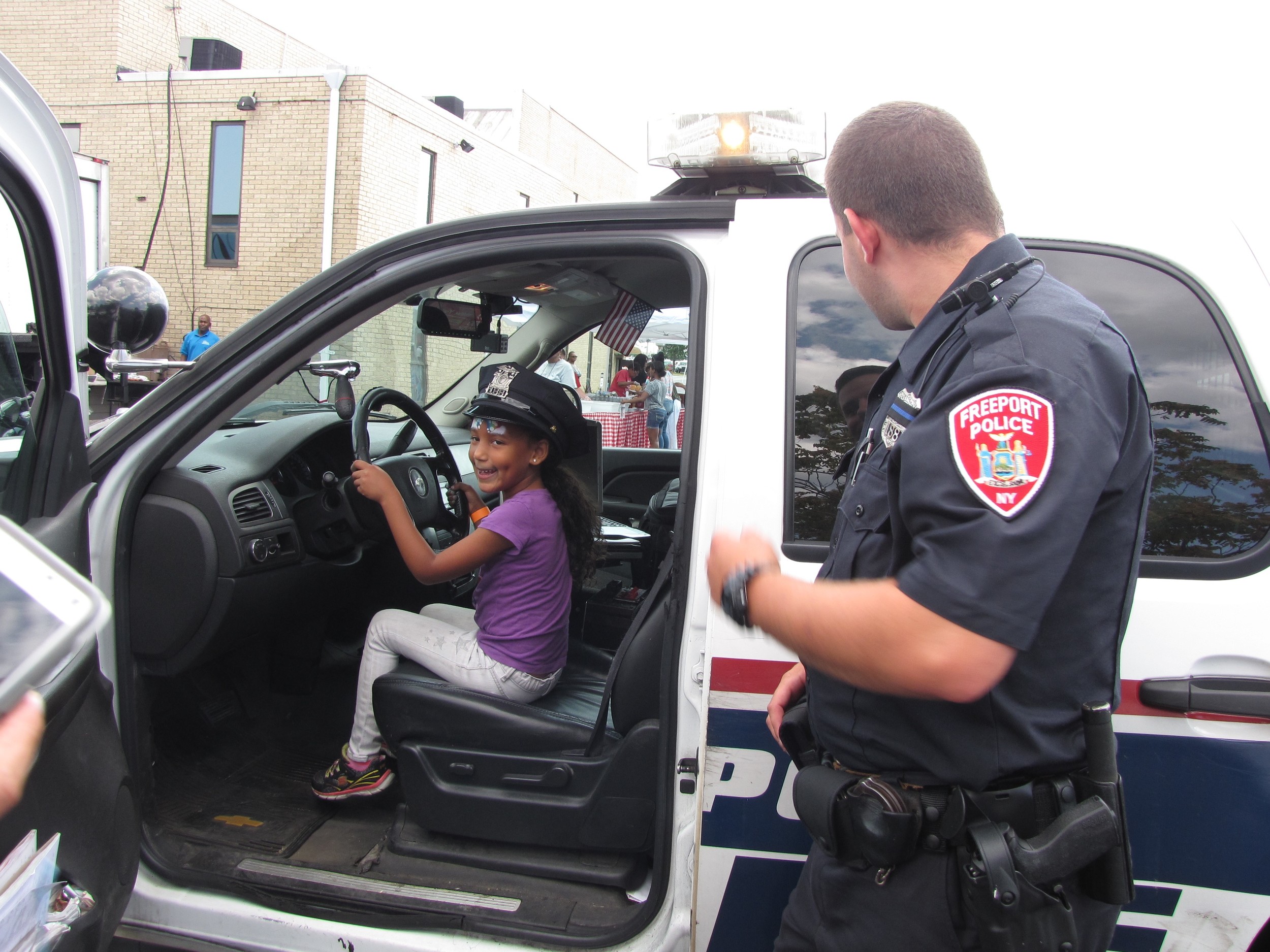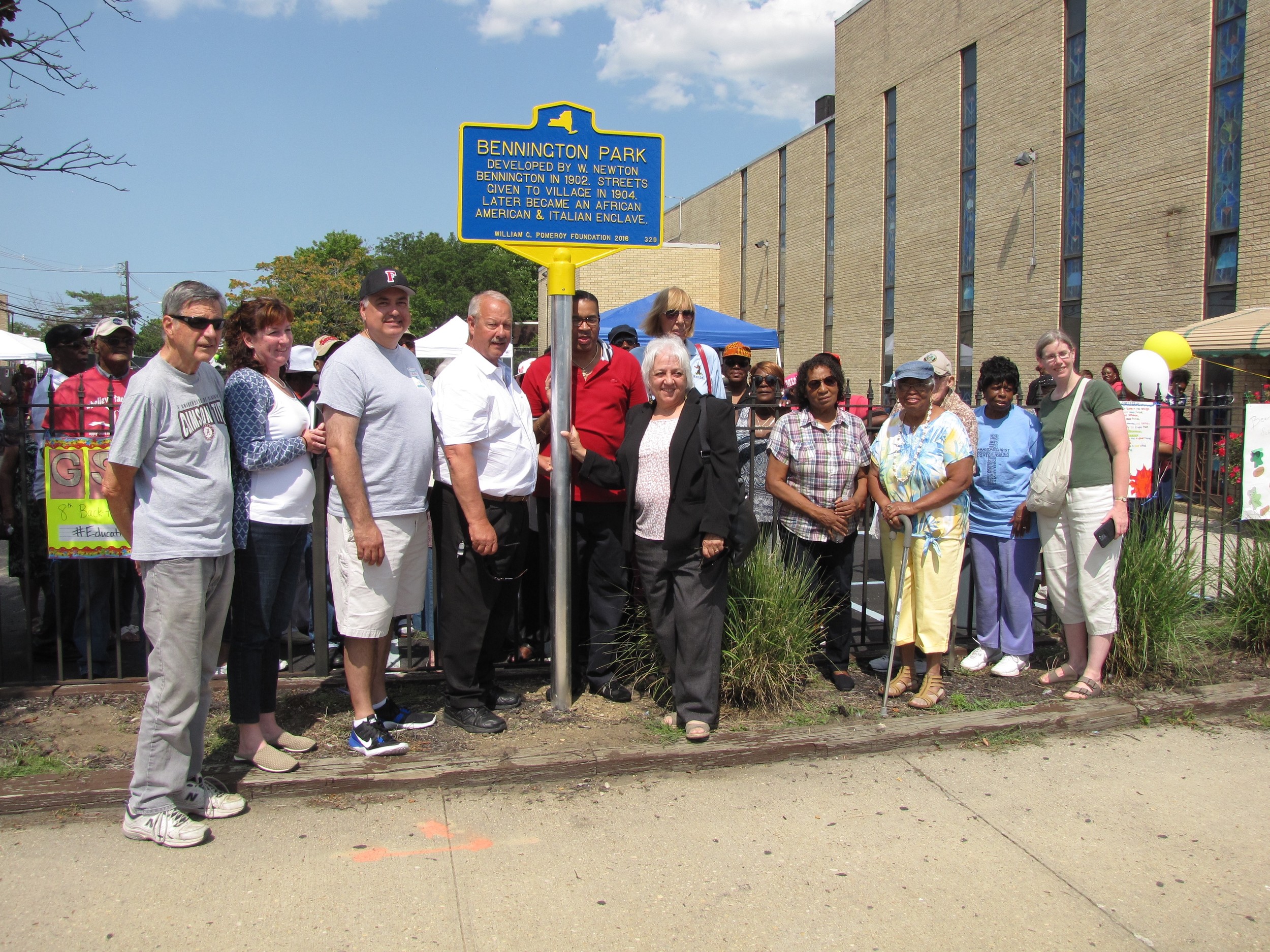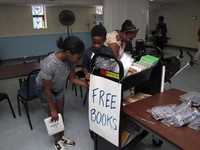Freeport community celebrates school, local history
Six-year-old Itzel Vargas, who will start first grade at Bayview Avenue Elementary School in Freeport next week, sat patiently as a swirling, glittery rainbow with a cloud was painted on her face. Out of the corner of her eye, she noticed Freeport Police Officer Fred Gutmann walking through the crowd at the ninth annual Community Back-to-School Barbecue at the Greater Second Baptist Church on Aug. 26.
Excited, Itzel started fidgeting, seeking Gutmann’s attention. After the face-painter added the finishing touches, Itzel took off to introduce herself to the officer, and within minutes, children surrounded him.
“This is a wonderful tradition,” Deputy Mayor Jorge Martinez said of the annual back-to-school event as he waited in line to grab a hotdog. “This type of event really helps the community.”
The barbecue provides Freeport children with back-to-school supplies and books while they enjoy a few hours of bouncy houses and burgers, hot dogs and ice cream. This year the festivities coincided with historical marker dedications by the Freeport Landmarks Preservation Commission, which spent the early part of Saturday unveiling them. Village officials and Freeport Historical Society members accompanied commission representatives at the unveilings.
The commission received three roadside markers from the William C. Pomeroy Foundation to install around Freeport. The dedications of the blue-and-yellow markers play an important role in local historic preservation while educating the public and promoting historical tourism.
At 10 a.m., off the north end of Woodcleft Avenue and Front Street, the first dedication commemorated the Woodcleft Inn, once located in what is now Randall Park. According to the commission, the Woodcleft Inn was built at the north end of Woodcleft Canal in 1897, and guests had easy access to the ocean beaches by ferry.
The Inn was the first large summer hotel built in Freeport by John Randall, known as the “Father of Freeport,” and his partner William Miller, who was the second president of the village. It was later sold to the Society of St. Vincent de Paul as a “fresh air home” for poor children and recuperating mothers. The Inn was abandoned in the early 1920s because the society could not raise enough money to keep the home in operation. It was later demolished, and is now the site of Randall Park’s playground and swimming pool.
At 11 a.m., the group made its way to 267 South Ocean Ave. on the corner of South Ocean Avenue and Archer Street which was once the home of Col. James Dean. Dean, president of Freeport from 1902 to 1905. He served in the Civil War with the New York Volunteer Infantry Regiment, until the end of the war in 1865. After the war, Dean moved to Freeport in 1892, the year the village was incorporated. He amassed one of the largest collections of antique weapons. The property later became the Freeport Hospital, which was eventually torn down.
By 2 p.m., the back-to-school celebrations were under way, with families lining up to receive backpacks and grab burgers. The sound of police and fire sirens echoed through the Greater Second Baptist Church as people joined Mayor Robert Kennedy and the Rev. Eric Mallette to prepare the special unveiling of the church’s historical marker.
“This is such a cool event,” Itzela Vargas, 25, of Freeport, said in her native Spanish. “My daughter loves police officers, and she got to meet one today. I got help with school supplies for the kids, and we were able to learn a little history of our neighborhood.”
The Greater Second Baptist Church was once known as Bennington Park, which was developed in 1902 by W. Newton Bennington, a real estate agent, on land that once was owned by a farmer named Joseph Raynor, who died in 1897.
Bennington Park streets included Alexander Avenue, Bennington Avenue, Benson Place, Columbus Avenue, Fulton Street (Merrick Road), Helen Avenue, Liberty Avenue, Rhodesia Street and Waverly Place. Rhodesia Street disappeared around 1914 and became an extension of Benson Place.
Bennington Park was home to a diverse population, but was known as an enclave of African-Americans and Italian-Americans, with its own stores, bars and churches. In 1937 there were five neighborhood churches, including Bethel, which was founded in 1902; the Bennington Park Baptist Church, which had been incorporated as the Greater Second Baptist Church in 1931; and the Bennington Park Church of God, known today as Zion Cathedral.
“Thank you for this historical dedication,” Mallette said. “This is a part of our history.”
The Freeport Landmarks Preservation Commission provided historical information on the markers.

 39.0°,
Fair
39.0°,
Fair 